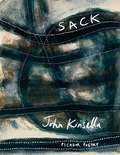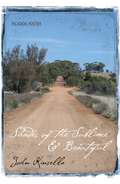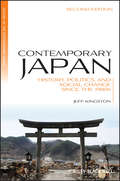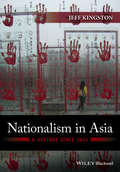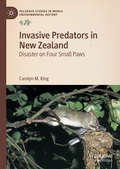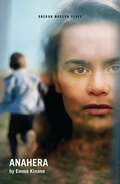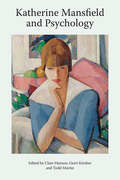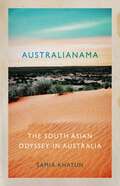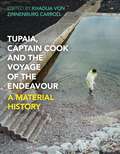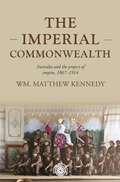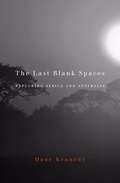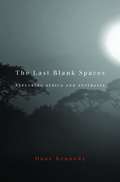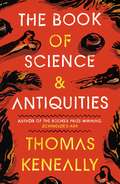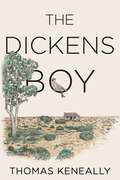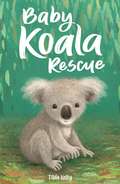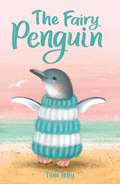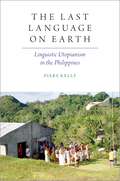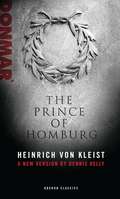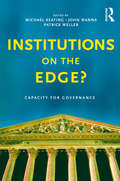- Table View
- List View
Sack
by John KinsellaIn John Kinsella's new collection, 'Sack' not only refers not only to the shocking title poem, where a tied, writhing sack is seen flung from a car into gully - but also to the sacking and exploitation of the landscape and those who labour on it. Kinsella draws vividly on 'childhood memories' - but reveals them for the hard truths they are, by subtracting the cushioning effects of nostalgia. Kinsella shows how childhood prefigures our adult experience, and how its residues (here, those also take the literal form of asbestos and radiation) influence and shape our futures. Elsewhere, Kinsella resurrects an old form to do new work: the 'penillion' is an old Welsh stanza whose concision and insistent musicality provide the ideal means to encapsulate and concentrate Kinsella's vision of the land, animal life, and our sometimes fraught relationship with both. These short poems reveal astonishing and unsuspected correlations between music and form, place and language - and will come as a delightful surprise to those who know Kinsella primarily as a freewheeling long-form poet. But throughout Sack, the articulate urgency of Kinsella's lyric builds to nothing so much as a call to action, and underlines John Kinsella's reputation as one of the greatest Australian poets of the last fifty years.
Shades of the Sublime & Beautiful
by John KinsellaAustralian John Kinsella is one of the most highly regarded poets currently writing in English. Taking Edmund Burke’s 250-year old masterpiece A Philosophical Enquiry into the Origin of Our Ideas of the Sublime and Beautiful as his template, Kinsella has produced his most accomplished and broadly representative work to date. Shades of the Sublime & Beautiful is a warm, human, anecdotally rich book, concentrating many of the themes that have obsessed its author over the last twenty years: language, love, the invocation of place, the mysteries of the Australian wilderness, and our mediations between the human and natural realms. Together, these lyric meditations build towards a profound thesis on the ecology of the imagination, and are always conducted in concrete, vivid and exuberant language that is unmistakably Kinsella’s own. ‘Kinsella’s poems are a very rare feat: they are narratives of feeling. Vivid sight – of landscapes, of animals, of human forms in distant light – becomes insight. There is, often, the shock of the new. But somehow awaited, even familiar. Which is the homecoming of a true poet’ George Steiner ‘John Kinsella is an Orphic fountain, a prodigy of the imagination . . . he frequently makes me think of John Ashbery: improbable fecundity, eclecticism, and a stand that fuses populism and elitism in poetic audience’ Harold Bloom
Contemporary Japan: History, Politics, and Social Change since the 1980s (Blackwell History of the Contemporary World #15)
by Jeff KingstonThe second edition of this comprehensive study of recent Japanese history now includes the author's expert assessment of the effects of the earthquake and tsunami, including the political and environmental consequences of the Fukushima reactor meltdown. Fully updated to include a detailed assessment of the aftermath of the March 2011 earthquake and tsunami Shows how the nuclear crisis at Fukushima was an accident waiting to happen Includes detailed discussion of Japan's energy policy, now in flux after the mishandling of the Fukushima crisis Analyzes Japan's 'Lost Decades', why jobs and families are less stable, environmental policies, immigration, the aging society, the US alliance, the imperial family, and the 'yakuza' criminal gangs Authoritative coverage of Japanese history over the last two decades, one of the country's most tumultuous periods
Contemporary Japan: History, Politics, and Social Change since the 1980s (Blackwell History of the Contemporary World #14)
by Jeff KingstonThe second edition of this comprehensive study of recent Japanese history now includes the author's expert assessment of the effects of the earthquake and tsunami, including the political and environmental consequences of the Fukushima reactor meltdown. Fully updated to include a detailed assessment of the aftermath of the March 2011 earthquake and tsunami Shows how the nuclear crisis at Fukushima was an accident waiting to happen Includes detailed discussion of Japan's energy policy, now in flux after the mishandling of the Fukushima crisis Analyzes Japan's 'Lost Decades', why jobs and families are less stable, environmental policies, immigration, the aging society, the US alliance, the imperial family, and the 'yakuza' criminal gangs Authoritative coverage of Japanese history over the last two decades, one of the country's most tumultuous periods
Nationalism in Asia: A History Since 1945
by Jeff KingstonUsing a comparative, interdisciplinary approach, Nationalism in Asia analyzes currents of nationalism in five contemporary Asian societies: China, India, Indonesia, Japan, and South Korea. Explores the ways in which nationalism is expressed, embraced, challenged, and resisted in contemporary China, India, Indonesia, Japan, and South Korea using a comparative, interdisciplinary approach Provides an important trans-national and trans-regional analysis by looking at five countries that span Northeast, Southeast, and South Asia Features comparative analysis of identity politics, democracy, economic policy, nation branding, sports, shared trauma, memory and culture wars, territorial disputes, national security and minorities Offers an accessible, thematic narrative written for non-specialists, including a detailed and up-to-date bibliography Gives readers an in-depth understanding of the ramifications of nationalism in these countries for the future of Asia
Nationalism in Asia: A History Since 1945
by Jeff KingstonUsing a comparative, interdisciplinary approach, Nationalism in Asia analyzes currents of nationalism in five contemporary Asian societies: China, India, Indonesia, Japan, and South Korea. Explores the ways in which nationalism is expressed, embraced, challenged, and resisted in contemporary China, India, Indonesia, Japan, and South Korea using a comparative, interdisciplinary approach Provides an important trans-national and trans-regional analysis by looking at five countries that span Northeast, Southeast, and South Asia Features comparative analysis of identity politics, democracy, economic policy, nation branding, sports, shared trauma, memory and culture wars, territorial disputes, national security and minorities Offers an accessible, thematic narrative written for non-specialists, including a detailed and up-to-date bibliography Gives readers an in-depth understanding of the ramifications of nationalism in these countries for the future of Asia
Invasive Predators in New Zealand: Disaster on Four Small Paws (Palgrave Studies in World Environmental History)
by Carolyn M. KingThe story of invasive species in New Zealand is unlike any other in the world. By the mid-thirteenth century, the main islands of the country were the last large landmasses on Earth to remain uninhabited by humans, or any other land mammals. New Zealand’s endemic fauna evolved in isolation until first Polynesians, and then Europeans, arrived with a host of companion animals such as rats and cats in tow. Well-equipped with teeth and claws, these small furry mammals, along with the later arrival of stoats and ferrets, have devastated the fragile populations of unique birds, lizards and insects. Carolyn M. King brings together the necessary historical analysis and recent ecological research to understand this long, slow tragedy. As a comprehensive historical perspective on the fate of an iconic endemic fauna, this book offers much-needed insight into one of New Zealand’s longest-running national crises.
Anahera (Oberon Modern Plays)
by Emma Kinane11-year-old Harry Hunter is missing. While they wait for news, Anahera – a newly qualified Māori social worker – supports Harry’s distraught parents. But as the hours pass and the situation pushes everyone to their limits, Anahera is forced to take a stand. A European debut for an exciting new voice from New Zealand
Katherine Mansfield and Psychology (Katherine Mansfield Studies)
by Gerri Kimber W. Todd MartinIn line with the recent surge of critical interest in early psychology, the contributors read Mansfield’s work alongside figures like William James and Henri Bergson, opening up new perspectives on affect in her work. While these essays trace strands within the intellectual milieu in which Mansfield came of age, others explore the intricate interplay between Mansfield’s fiction and Freudian theory, seeing her work as emblematic of the uncanny doubling of modernist literature and psychoanalysis.
Katherine Mansfield and Psychology (Katherine Mansfield Studies)
by Gerri Kimber W. Todd MartinIn line with the recent surge of critical interest in early psychology, the contributors read Mansfield’s work alongside figures like William James and Henri Bergson, opening up new perspectives on affect in her work. While these essays trace strands within the intellectual milieu in which Mansfield came of age, others explore the intricate interplay between Mansfield’s fiction and Freudian theory, seeing her work as emblematic of the uncanny doubling of modernist literature and psychoanalysis.
Australianama: The South Asian Odyssey in Australia
by Samia KhatunAustralian deserts remain dotted with the ruins of old mosques. Beginning with a Bengali poetry collection discovered in a nineteenth-century mosque in the town of Broken Hill, Samia Khatun weaves together the stories of various peoples colonized by the British Empire to chart a history of South Asian diaspora. Australia has long been an outpost of Anglo empires in the Indian Ocean world, today the site of military infrastructure central to the surveillance of 'Muslim-majority' countries across the region. Imperial knowledges from Australian territories contribute significantly to the Islamic-Western binary of the post- Cold War era. In narrating a history of Indian Ocean connections from the perspectives of those colonized by the British, Khatun highlights alternative contexts against which to consider accounts of non-white people. Australianama challenges a central idea that powerfully shapes history books across the Anglophone world: the colonial myth that European knowledge traditions are superior to the epistemologies of the colonized. Arguing that Aboriginal and South Asian language sources are keys to the vast, complex libraries that belie colonized geographies, Khatun shows that stories in colonized tongues can transform the very ground from which we view past, present and future.
Australianama: The South Asian Odyssey in Australia
by Samia KhatunAustralian deserts remain dotted with the ruins of old mosques. Beginning with a Bengali poetry collection discovered in a nineteenth-century mosque in the town of Broken Hill, Samia Khatun weaves together the stories of various peoples colonized by the British Empire to chart a history of South Asian diaspora. Australia has long been an outpost of Anglo empires in the Indian Ocean world, today the site of military infrastructure central to the surveillance of 'Muslim-majority' countries across the region. Imperial knowledges from Australian territories contribute significantly to the Islamic-Western binary of the post- Cold War era. In narrating a history of Indian Ocean connections from the perspectives of those colonized by the British, Khatun highlights alternative contexts against which to consider accounts of non-white people. Australianama challenges a central idea that powerfully shapes history books across the Anglophone world: the colonial myth that European knowledge traditions are superior to the epistemologies of the colonized. Arguing that Aboriginal and South Asian language sources are keys to the vast, complex libraries that belie colonized geographies, Khatun shows that stories in colonized tongues can transform the very ground from which we view past, present and future.
Tupaia, Captain Cook and the Voyage of the Endeavour: A Material History
by Khadija von Zinnenburg CarrollCentring priest and navigator Tupaia and Pacific worldviews, this richly illustrated volume weaves a new set of cultural histories in the Pacific, between local islanders and the crew of the Endeavour on James Cook's first 'voyage of discovery' (1768-1771). Contributors consider material collections brought back from the voyage, paying particular attention to Tupaia's drawings, maps, cloth and clothes, and the attending narratives that framed Britain's engagement with Pacific peoples. Bringing together indigenous and Pacific-based artists, scholars, historians, theorists and tailors, this book presents a cross-cultural conversation around the concepts of acquired and curated artefacts that traversed oceans and entwined cultures. Each chapter draws attention to a particular material, object or process to reveal fresh insights on the voyage, the societies it brought together and the histories it transformed. Authors also explore animal iconography, instruments and ethnomusicology, and performances and rituals. This work challenges colonial museum collections and celebrations of Cook's voyages, using materials old and new to make connections between past and present, whilst reinforcing Tupaia's agency as both a historical figure and a contemporary muse. Tracing overlapping folds of symbolism, this book draws together a picture of the diverse materials and people at the centre of cultural exchange.
The imperial Commonwealth: Australia and the project of empire, 1867-1914 (Studies in Imperialism #202)
by Wm. Matthew KennedyFrom the late 1800s to the early 1900s, Australian settler colonists mobilised their unique settler experiences to develop their own vision of what ‘empire’ was and could be. Reinterpreting their histories and attempting to divine their futures with a much heavier concentration on racialized visions of humanity, white Australian settlers came to believe that their whiteness as well as their Britishness qualified them for an equal voice in the running of Britain’s imperial project. Through asserting their case, many soon claimed that, as newly minted citizens of a progressive and exemplary Australian Commonwealth, white settlers such as themselves were actually better suited to the modern task of empire. Such a settler political cosmology with empire at its center ultimately led Australians to claim an empire of their own in the Pacific Islands, complete with its own, unique imperial governmentality.
The imperial Commonwealth: Australia and the project of empire, 1867-1914 (Studies in Imperialism #202)
by Wm. Matthew KennedyFrom the late 1800s to the early 1900s, Australian settler colonists mobilised their unique settler experiences to develop their own vision of what ‘empire’ was and could be. Reinterpreting their histories and attempting to divine their futures with a much heavier concentration on racialized visions of humanity, white Australian settlers came to believe that their whiteness as well as their Britishness qualified them for an equal voice in the running of Britain’s imperial project. Through asserting their case, many soon claimed that, as newly minted citizens of a progressive and exemplary Australian Commonwealth, white settlers such as themselves were actually better suited to the modern task of empire. Such a settler political cosmology with empire at its center ultimately led Australians to claim an empire of their own in the Pacific Islands, complete with its own, unique imperial governmentality.
The Last Blank Spaces: Exploring Africa And Australia
by Dane KennedyThe challenge of opening Africa and Australia to British imperial influence fell to a coterie of proto-professional explorers who sought knowledge, adventure, and fame but often experienced confusion, fear, and failure. The Last Blank Spaces follows the arc of these explorations, from idea to practice, intention to outcome, myth to reality.
The Last Blank Spaces: Exploring Africa And Australia
by Dane KennedyThe challenge of opening Africa and Australia to British imperial influence fell to a coterie of proto-professional explorers who sought knowledge, adventure, and fame but often experienced confusion, fear, and failure. The Last Blank Spaces follows the arc of these explorations, from idea to practice, intention to outcome, myth to reality.
The Book of Science and Antiquities: A Novel
by Thomas KeneallyIn a novel of breathtaking reach and inspired imagination, the Booker Prize-winning author of Schindler's Ark tells the stories of two men who have much in common. What separates them is 42,000 years.Shade lives with his second wife amid their clan on the shores of a bountiful lake. A peaceable man, he knows that when danger threatens, the Hero ancestors will call on him to kill, or sacrifice himself, to save his people.Over 40,000 years later, Shade's remains are unearthed near the now dry Lake Learned in New South Wales. The sensational discovery fascinates Shelby Apple, a documentary film maker who tracks the controversies it provokes about who the continent's first inhabitants were and where Shade's bones belong.Shelby goes on to follow his own heroes to the battlefields of Eritrea and the Rift Valley where Homo sapiens sprang from. When he, too, faces mortality and looks back on his passions, ideals and sorely tested marriage, Learned Man stands as an enduring spirit, a fellow player in the long, ever-evolving story of humankind.
The Dickens Boy
by Thomas KeneallyIn 1868, Charles Dickens dispatches his youngest child to Australia. Like his brother Alfred before him, sixteen-year-old Edward is expected to learn to apply himself in what his father considers to be the new land of opportunity. Posted to a remote sheep station in New South Wales, Edward discovers that Charles Dickens' fame has reached even there, as has the gossip about his father's scandalous liaison with an actress. Amid colonists, ex-convicts, local tribespeople and a handful of eligible young women, Edward strives to be his own man - and keep secret the fact that he's read none of his father's novels.Conjuring up a life of sheep-droving, horse-racing and cricket tournaments in a community riven with tensions and prejudice, the story of Edward's adventures also affords an intimate portrait of Dickens' himself. This vivacious novel is classic Keneally: historical figures and events re-imagined with verve, humour and compassion.
Baby Koala Rescue
by Tilda KellyA tragic bush fire sparks a beautiful friendship between a young girl and a baby koala. Ruby is dreading changing schools as her autism makes it hard to befriend other kids. But when her dog finds a baby koala and her family agrees to foster it, Ruby quickly becomes the koala's best friend. Ruby loves quiet and routine, which makes her a perfect koala carer! A talented artist, she names the koala Pablo - after her favourite artist. Through looking after Pablo, Ruby befriends a neighbouring girl who loves painting as much as she does. Soon Pablo is well enough to move to a koala kindergarten. But is Ruby ready to move to her own new school?
The Fairy Penguin
by Tilda KellyCan a fairy penguin make a little girl's Christmas wish come true? A warm and fuzzy animal story that's perfect for sharing. A lonely girl named Millie, who has recently moved to Australia, rescues an orphaned baby fairy penguin on Christmas Eve. Millie takes the penguin - the victim of an oil spill - home and names her Tink. Caring for Tink helps Millie grieve the loss of her mum. And when she organises a knit-a-thon to make tiny woolly jumpers for Tink and other injured fairy penguins, her wish to make new friends begins to come true . . . The first in a new series of classic, heartwarming animal stories by Tilda Kelly.
The Last Language on Earth: Linguistic Utopianism in the Philippines (Oxford Studies in the Anthropology of Language)
by Piers KellyThe Last Language on Earth is an ethnographic history of the disputed Eskayan language, spoken today by an isolated upland community living on the island of Bohol in the southern Philippines. After Eskaya people were first 'discovered' in 1980, visitors described the group as a lost tribe preserving a unique language and writing system. Others argued that the Eskaya were merely members of a utopian rural cult who had invented their own language and script. Rather than adjudicating outsider polemics, this book engages directly with the language itself as well as the direct perspectives of those who use it today. Through written and oral accounts, Eskaya people have represented their language as an ancestral creation derived from a human body. Reinforcing this traditional view, Piers Kelly's linguistic analysis shows how a complex new register was brought into being by fusing new vocabulary onto a modified local grammar. In a synthesis of linguistic, ethnographic, and historical evidence, a picture emerges of a coastal community that fled the ravages of the U.S. invasion of the island in 1901 in order to build a utopian society in the hills. Here they predicted that the world's languages would decline leaving Eskayan as the last language on earth. Marshalling anthropological theories of nationalism, authenticity, and language ideology, along with comparisons to similar events across highland Southeast Asia, Kelly offers a convincing account of this linguistic mystery and also shows its broader relevance to linguistic anthropology. Although the Eskayan situation is unusual, it has the power to illuminate the pivotal role that language plays in the pursuit of identity-building and political resistance.
The Last Language on Earth: Linguistic Utopianism in the Philippines (Oxford Studies in the Anthropology of Language)
by Piers KellyThe Last Language on Earth is an ethnographic history of the disputed Eskayan language, spoken today by an isolated upland community living on the island of Bohol in the southern Philippines. After Eskaya people were first 'discovered' in 1980, visitors described the group as a lost tribe preserving a unique language and writing system. Others argued that the Eskaya were merely members of a utopian rural cult who had invented their own language and script. Rather than adjudicating outsider polemics, this book engages directly with the language itself as well as the direct perspectives of those who use it today. Through written and oral accounts, Eskaya people have represented their language as an ancestral creation derived from a human body. Reinforcing this traditional view, Piers Kelly's linguistic analysis shows how a complex new register was brought into being by fusing new vocabulary onto a modified local grammar. In a synthesis of linguistic, ethnographic, and historical evidence, a picture emerges of a coastal community that fled the ravages of the U.S. invasion of the island in 1901 in order to build a utopian society in the hills. Here they predicted that the world's languages would decline leaving Eskayan as the last language on earth. Marshalling anthropological theories of nationalism, authenticity, and language ideology, along with comparisons to similar events across highland Southeast Asia, Kelly offers a convincing account of this linguistic mystery and also shows its broader relevance to linguistic anthropology. Although the Eskayan situation is unusual, it has the power to illuminate the pivotal role that language plays in the pursuit of identity-building and political resistance.
Prince of Homburg (Oberon Modern Plays)
by Dennis KellyHeroic commander of the Prussian cavalry, the Prince of Homburg dreams of victory, glory and fame. But reckless disobedience during a crucial military operation leads the Prince into his greatest battle yet. The creative team behind the Donmar’s critically acclaimed production of Life Is A Dream present Von Kleist’s poetic masterpiece, which is considered to be one of the most haunting and beautiful plays of the nineteenth century, exploring honour, courage, ambition and love. Adapted for stage by acclaimed British writer Dennis Kelly, this is an exciting new adaptation of a classic of European literature.
Institutions on the edge?: Capacity for governance
by Michael Keating John Wanna Patrick WellerAustralia faces major challenges to its forms of governance. Changing expectations from its citizens, global pressures on the economy and technological innovation are impacting on government operations. Yet most of its institutions were designed a hundred years ago. Cabinet government was inherited. Parliament was already established in its forms and procedures. The federal structure, the High Court and the federal public service were created as a consequence. The party structure has been effectively frozen since the 1920s and a tradition of handing some responsibilities to arms-length organisations was well established.So how have these institutions changed over the last hundred years and how well will they adapt to the demands of the modern world? Do they have the capacity to adapt appropriately and enable governments to achieve their preferred outcomes? In this book experienced academics and practitioners explore these questions. They examine each of the institutions in terms of their ability to meet new challenges and provide some hope that Australia's institutions, even if at times slow to move and dominated by internal interests, have a capacity to adapt and govern effectively. The book shows our political institutions in a new light, as dynamic, often flexible organisms; it provides important new insights into the way we are governed and how our system of governance might develop in the future.
